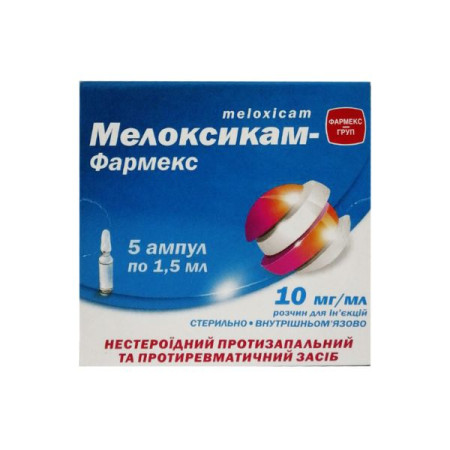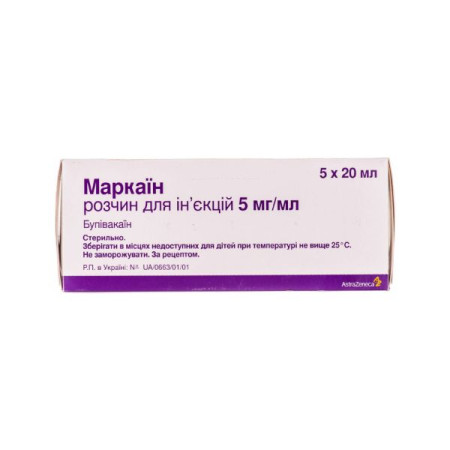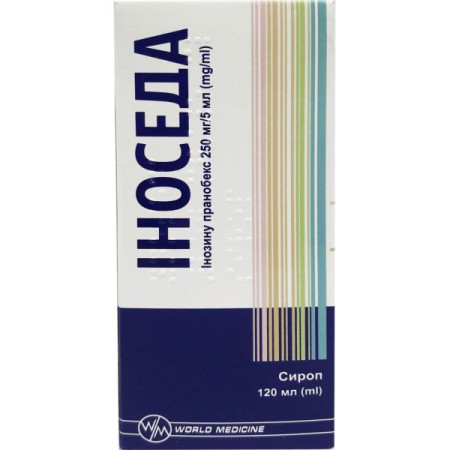Atropine-Darnitsa solution for injection 0.1% ampoule 1 ml No. 10

Translation of the instructions can be
ATROPINE-DARNITSA® solution for injection 1 mg/mlInstruction
For medical use of the medicinal product
Composition:
Active ingredient: atropine sulfate;
1 ml of solution contains: atropine sulfate - 1 mg;
Excipients: hydrochloric acid, water for injection.
Dosage form.
Solution for injection.
Main physicochemical properties: clear colorless liquid.
Pharmacotherapeutic group.
Belladonna alkaloids (belladonna), tertiary amines. atropine. ATS code a03b a01.
Pharmacological properties.
Pharmacodynamics.
Atropine is an alkaloid found in plants of the Solanaceae family, a blocker of M-cholinoreceptors, binds equally to the M 1 -, M 2 - and M 3 subtypes of muscarinic receptors. It affects both central and peripheral M-cholinoreceptors. It also acts (although much weaker) on H-cholinoreceptors. It prevents the stimulating effect of acetylcholine, reduces the secretion of salivary, gastric, bronchial, lacrimal and sweat glands. It reduces the tone of the muscles of internal organs (bronchi, gastrointestinal tract, pancreas, bile ducts and gallbladder, urethra, urinary bladder); causes tachycardia, improves AV conduction. It reduces the motility of the gastrointestinal tract, has practically no effect on the secretion of bile and pancreas. Dilates the pupils, hinders the outflow of intraocular fluid, increases intraocular pressure, causes accommodation paralysis. In medium therapeutic doses, it affects the central nervous system and causes a delayed but long-lasting sedative effect, stimulates breathing.
Pharmacokinetics.
Atropine sulfate is rapidly absorbed into the bloodstream from the site of administration. It is rapidly distributed in the body, penetrates the blood-brain and placental barriers and into breast milk. After intravenous administration, the maximum effect occurs after 2-4 minutes. Bioavailability is 25%. 50% is metabolized in the liver by hydrolysis to tropine and troponin acid. Binding to plasma proteins is 18%. In significant concentrations, it is detected in the central nervous system after 0.5-1 hour. The half-life is 2 hours. The drug is excreted by the kidneys: in unchanged form - 50%, the rest - in the form of hydrolysis and conjugation products.
Clinical characteristics.
Indication.
As a symptomatic remedy for gastric and duodenal ulcers, pylorospasm, acute pancreatitis, cholelithiasis, cholecystitis, intestinal spasms, urinary tract spasms, bronchial asthma, bradycardia, as a result of increased vagus nerve tone, to reduce the secretion of salivary, gastric, bronchial, sometimes sweat glands, for X-ray examination of the digestive tract (reduced tone and motor activity of organs).
The drug is indicated for use before anesthesia and surgery and during surgery as a means of preventing broncho- and laryngospasm, reducing glandular secretion, reflex reactions and side effects caused by vagus nerve excitation. As a specific antidote for poisoning with cholinomimetic compounds and anticholinesterase (including organophosphorus) substances.
Contraindication.
Hypersensitivity to the components of the drug. diseases of the cardiovascular system in which an increase in heart rate may be undesirable: atrial fibrillation, tachycardia, chronic heart failure, ischemic heart disease, mitral stenosis, severe arterial hypertension. acute bleeding. thyrotoxicosis. hyperthermic syndrome. diseases of the gastrointestinal tract accompanied by obstruction (achalasia of the esophagus, pyloric stenosis, intestinal atony). glaucoma. hepatic and renal failure. myasthenia gravis. urinary retention or tendency to it. brain damage.
Interaction with other drugs and other types of interactions.
When using atropine sulfate with monoamine oxidase inhibitors, cardiac arrhythmias occur, and with quinidine and novocainamide, a summation of the anticholinergic effect is observed.
When taken orally together with lily of the valley preparations, a physicochemical interaction with tannin is observed, which leads to a mutual weakening of the effects.
Atropine sulfate reduces the duration and depth of action of narcotics and weakens the analgesic effect of opiates.
The effect of atropine sulfate may be enhanced by the simultaneous use of other drugs with antimuscarinic effects: M-cholinoblockers, antiparkinsonian drugs (amantadine), antispasmodics, some antihistamines, butyrophenone drugs, phenothiazines, dispyramides, quinidine and tricyclic antidepressants, nonselective monoamine reuptake inhibitors.
Inhibition of peristalsis by atropine may alter the absorption of other drugs.
Application features.
Use with caution in patients with prostatic hypertrophy without urinary tract obstruction, Down syndrome, cerebral palsy, reflux esophagitis, hiatal hernia associated with reflux esophagitis, nonspecific ulcerative colitis, megacolon, patients with xerostomia, elderly or debilitated patients, chronic lung diseases without reversible obstruction, chronic lung diseases with little production of thick sputum, especially in young children and debilitated patients; in autonomic (autonomic) neuropathy.
Use during pregnancy or breastfeeding.
The drug is contraindicated during pregnancy.
The use of atropine sulfate during breastfeeding is contraindicated due to the risk of toxic effects on the child.
The ability to influence the reaction speed when driving vehicles or other mechanisms.
Given the possibility of side effects such as dizziness, hallucinations, and accommodation disorders, you should refrain from driving or operating other mechanisms while using the drug.
Method of administration and doses.
Atropine sulfate is administered subcutaneously, intramuscularly, intravenously. During induction anesthesia to reduce the risk of vagal depression of heart rate and decrease in salivary and bronchial gland secretion - 0.3-0.6 mg subcutaneously or intramuscularly 30-60 minutes before anesthesia; in combination with morphine (10 mg of morphine sulfate) - 1 hour before anesthesia. In case of poisoning with anticholinesterase drugs, atropine sulfate is administered 2 mg intramuscularly every 20-30 minutes until redness and dryness of the skin, dilation of the pupils and the appearance of tachycardia, and normalization of breathing. In moderate and severe poisoning, atropine can be administered for two days (until signs of "overatropinization" appear).
For children, the highest single dose, depending on age, is:
up to 6 months - 0.02 mg; from 6 months to 1 year - 0.05 mg; from 1 to 2 years - 0.2 mg; from 3 to 4 years - 0.25 mg; from 5 to 6 years - 0.3 mg; from 7 to 9 years - 0.4 mg; from 10 to 14 years - 0.5 mg.Higher doses for adults subcutaneously: single - 1 mg, daily - 3 mg.
Use caution when prescribing atropine sulfate to the elderly.
Children.
Children in the first 3 months of life are especially sensitive to atropine.
The drug should be administered to children in the doses specified in the section "Method of administration and doses".
Overdose.
Symptoms: increased manifestations of adverse reactions, nausea, vomiting, decreased blood pressure, agitation, tremor, convulsions, insomnia, drowsiness, hallucinations, irritability, hyperthermia, depression of the central nervous system, depression of the activity of the respiratory and vascular centers.
Treatment. Gastric lavage, parenteral administration of cholinomimetics and anticholinesterase agents. In case of hyperthermia, wet wipes and antipyretics are indicated, in case of agitation - intravenous administration of sodium thiopental or sodium oxybutyrate; in case of mydriasis - topically in the form of eye drops of phosphacol, physostigmine, pilocarpine. In case of glaucoma attack, 2 drops of 1% pilocarpine solution should be instilled into the conjunctival sac every hour and 1 ml of 0.05% proserin solution should be administered subcutaneously 3-4 times a day.
Adverse reactions.
On the part of the gastrointestinal tract: dry mouth, feeling of thirst, taste disturbance, dysphagia, decreased intestinal motility up to atony, decreased tone of the biliary tract and gallbladder.
On the part of the kidneys and urinary tract: difficulty and delay in urination.
Cardiovascular system: tachycardia, arrhythmia, including extrasystole, myocardial ischemia, facial flushing, sensation of hot flashes.
From the nervous system: headache, dizziness, nervousness, insomnia.
On the part of the organs of vision: dilated pupils, photophobia, accommodation paralysis, increased intraocular pressure, visual impairment.
On the part of the respiratory system and mediastinal organs: a decrease in secretory activity and bronchial tone, which leads to the formation of viscous sputum, which is difficult to cough up.
Skin and subcutaneous tissue disorders: skin rash, urticaria, exfoliative dermatitis.
Immune system disorders: hypersensitivity reactions, anaphylactic reactions, anaphylactic shock.
Others: decreased sweating, dry skin, dysarthria, changes at the injection site.
Expiration date.
3 years.
Storage conditions.
Store in the original packaging at a temperature not exceeding 25 °C. Do not freeze.
Keep out of reach of children.
Incompatibility.
Do not mix with other medicines. Use only the recommended diluent.
Packaging.
1 ml in an ampoule; 10 ampoules in a box; 5 ampoules in a contour blister pack; 2 contour blister packs in a pack.
Vacation category.
According to the recipe.
Chao "Darnitsa Pharmaceutical Company".
Location of production and its address of place of business.
Ukraine, 02093, Kyiv, Boryspilska St., 13.
There are no reviews for this product.
There are no reviews for this product, be the first to leave your review.
No questions about this product, be the first and ask your question.










